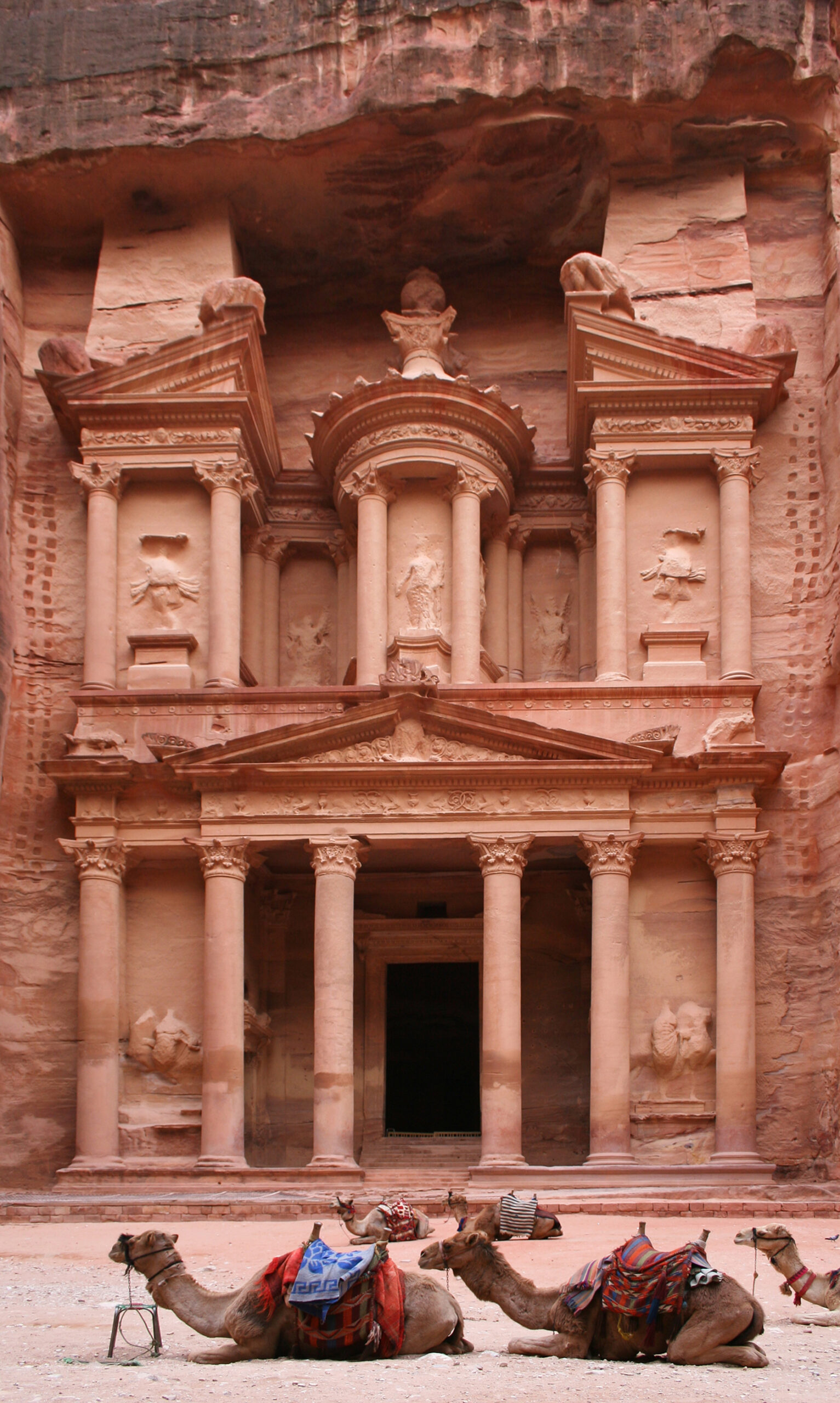Al-Khazneh, also known as The Treasury, is one of the most iconic and magnificent architectural wonders of Petra, Jordan. Carved into the rose-red sandstone cliffs that define the landscape of Petra, Al-Khazneh is a testament to the ingenuity, craftsmanship, and artistic prowess of the ancient Nabateans, who built the city as their capital and trading hub over two millennia ago.
The name “Al-Khazneh” translates to “The Treasury” in Arabic, a name that reflects the mysterious and awe-inspiring aura that surrounds this magnificent structure. Legend has it that Al-Khazneh once served as a treasury for the Nabateans, who were known for their wealth and prosperity derived from controlling lucrative trade routes that passed through Petra.
Al-Khazneh is believed to have been constructed in the 1st century CE, during the reign of King Aretas IV, although its exact purpose and function remain the subject of debate among historians and archaeologists. While it is commonly referred to as a treasury, some scholars believe that Al-Khazneh may have served as a mausoleum or a royal tomb, while others speculate that it may have been a temple dedicated to the gods.
What sets Al-Khazneh apart from other structures in Petra is its breathtaking facade, which rises over 40 meters high and is adorned with intricate carvings, elaborate reliefs, and towering columns. The facade is flanked by towering cliffs on either side, creating a dramatic and imposing entrance that captivates visitors with its sheer grandeur and beauty.
The most striking feature of Al-Khazneh is its magnificent sandstone facade, which is adorned with intricate carvings and decorative motifs that reflect a blend of Nabatean, Hellenistic, and Roman influences. The facade is dominated by a towering pediment, which is crowned by a sculpted urn that is said to have once contained the treasures of the Nabatean kings.
Beneath the pediment, a series of ornate reliefs and carvings depict mythological figures, deities, and scenes from Nabatean life, including hunting scenes, processions, and battles. The attention to detail and craftsmanship displayed in these carvings is truly remarkable, showcasing the skill and artistry of the ancient Nabatean artisans who created them.
The interior of Al-Khazneh is equally impressive, with a series of chambers and passageways that are believed to have once housed treasure chests, offerings, and other valuable artifacts. While the interior of Al-Khazneh has been largely looted and plundered over the centuries, the grandeur of its facade and the mystery of its purpose continue to captivate visitors from around the world.
Today, Al-Khazneh stands as a UNESCO World Heritage Site and one of Jordan’s most iconic landmarks, attracting thousands of visitors each year who come to marvel at its beauty and learn about its rich history and cultural significance. Whether viewed from afar or explored up close, Al-Khazneh remains a symbol of the enduring legacy of Petra and the ancient Nabateans, who left behind a legacy of architectural marvels that continue to inspire wonder and awe to this day.

